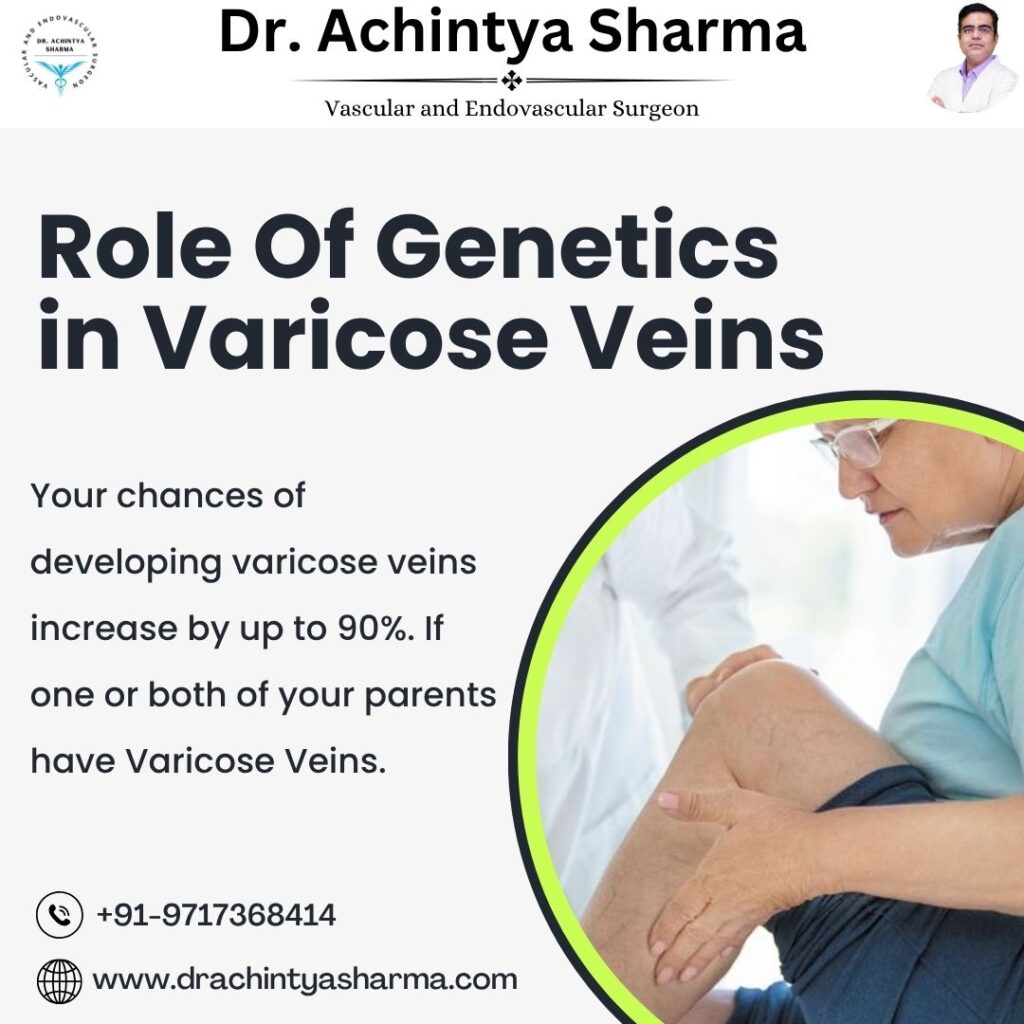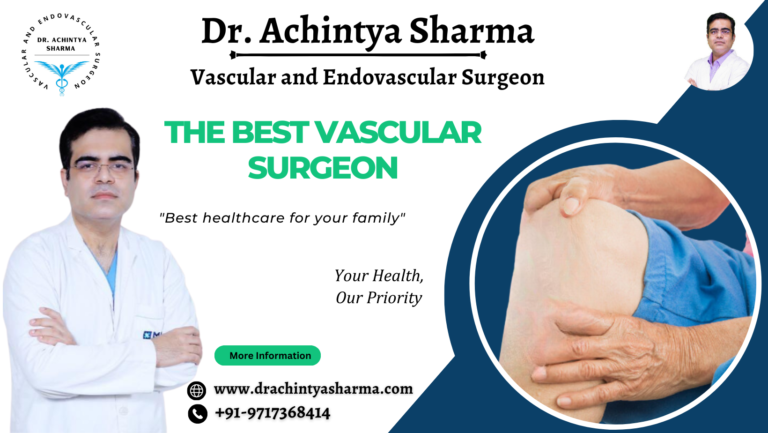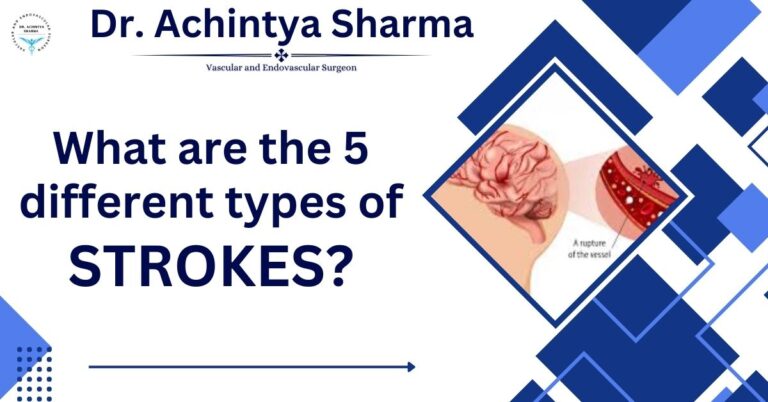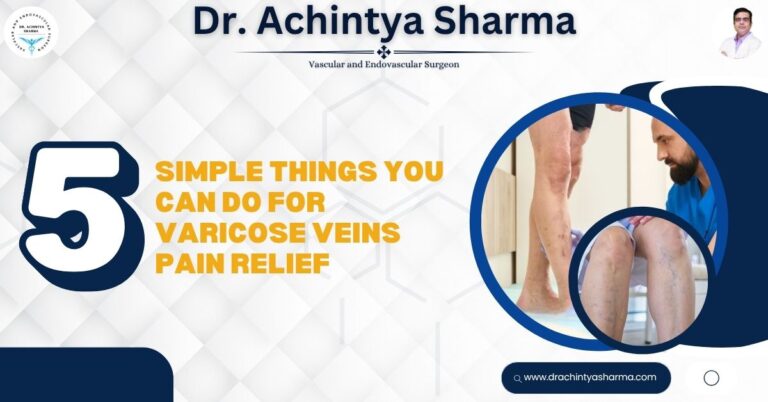Varicose veins are twisted, enlarged veins that mainly appear on the legs and feet. They don’t just look unpleasant—they can also cause pain, swelling, and a heavy feeling in the legs. Many people struggle with them, yet don’t fully understand why they occur or how to manage them.
In this blog, we’ll cover everything you need to know about varicose veins—what causes them, how genetics and weight play a role, what to expect after surgery, and most importantly, how to prevent them from coming back. With insights from Dr. Achintya Sharma, this guide is your step toward healthier legs.
What Causes Varicose Veins?
It all starts when the valves in your veins stop working decently. Your veins contain valves that act like one-way gates, pushing blood back to the heart. When these valves get weak, blood can collect in the veins instead of flowing the right way. This extra blood puts pressure on the veins, causing them to swell, twist, and protrude under the skin.
Common causes include:
- Standing or sitting for long hours
- Obesity
- Hormonal changes (especially in pregnancy)
- Age
- Genetics
Understanding the root cause can help you choose the best treatment and prevent future problems.
Do Genetics Play a Role in Varicose Veins?

Yes, Varicose veins often run in families, showing how much genetics can affect their development. If one or both of your parents have them, your chances increase up to 90%. Studies show that weak vein walls and faulty valves can be inherited. These weaknesses allow blood to flow backward and pool, creating varicose veins.
While you can’t change your genes, knowing your risk early can help you take preventive steps. Regular exercise, a healthy diet, and compression stockings can help reduce the pressure on your veins.
According to Dr. Achintya Sharma, early screening is important for people with a strong family history. Catching the problem early can save you from long-term discomfort and invasive treatments later on.
How Does Weight Affect Varicose Veins?
Now that we understand the role of genetics, let’s talk about lifestyle, specifically weight. Yes, carrying extra weight can impact how your veins function. Excess body weight increases pressure on your leg veins, making it harder for them to push blood back toward the heart. This pressure weakens the veins and damages the valves, leading to bulging, painful veins.
Losing weight can lessen the discomfort caused by varicose veins. Even a small amount of weight loss can improve blood flow and reduce swelling. A diet rich in fiber and low in salt can also prevent water retention and further reduce pressure on your veins.
Dr. Achintya Sharma recommends combining weight loss with light exercises like walking or swimming. These movements help your leg muscles push blood upward and relieve vein pressure over time.
What to Expect After Varicose Vein Surgery

After understanding the causes and risk factors, the next step is treatment. So, what can you expect once you’ve had varicose vein surgery?
You can usually walk the same day after minimally invasive varicose vein procedures like laser ablation or sclerotherapy. Walking is encouraged after surgery because it improves blood flow and reduces the risk of blood clots.
Most people return to their regular daily activities within a day or two. However, avoid intense physical activity for at least one to two weeks.
According to Dr. Achintya Sharma, gentle movement is the best form of recovery. Patients are advised to walk short distances multiple times a day, wear compression stockings, and keep their legs elevated while resting.
Can Varicose Veins Come Back After Treatment?
This brings us to the big question—will they come back?
Yes, varicose veins can return after treatment. This doesn’t mean the same veins reappear—but rather, new veins may become varicose due to ongoing issues like weak valves, poor circulation, or genetics. Sometimes, deeper problem veins aren’t treated during the first procedure, leading to recurrence.
To prevent them from coming back, focus on long-term care: stay active, avoid long periods of standing or sitting, wear compression stockings, and keep your weight in check. Routine check-ups with specialists like Dr. Achintya Sharma can help prevent varicose veins from coming back.
Conclusion
Varicose veins may be common, but it doesn’t mean you have to live with them. Whether you’re at risk due to genetics, weight, or lifestyle, there are real solutions to manage and prevent them. From walking after surgery to understanding why veins return, awareness is the first step toward recovery.
With expert advice from Dr. Achintya Sharma, patients have better outcomes and long-term relief. Don’t ignore the signs—take action early. A few lifestyle changes and the right treatment plan can give you smoother, pain-free legs for life. It’s time to feel good in your skin again, without the pain of varicose veins.




